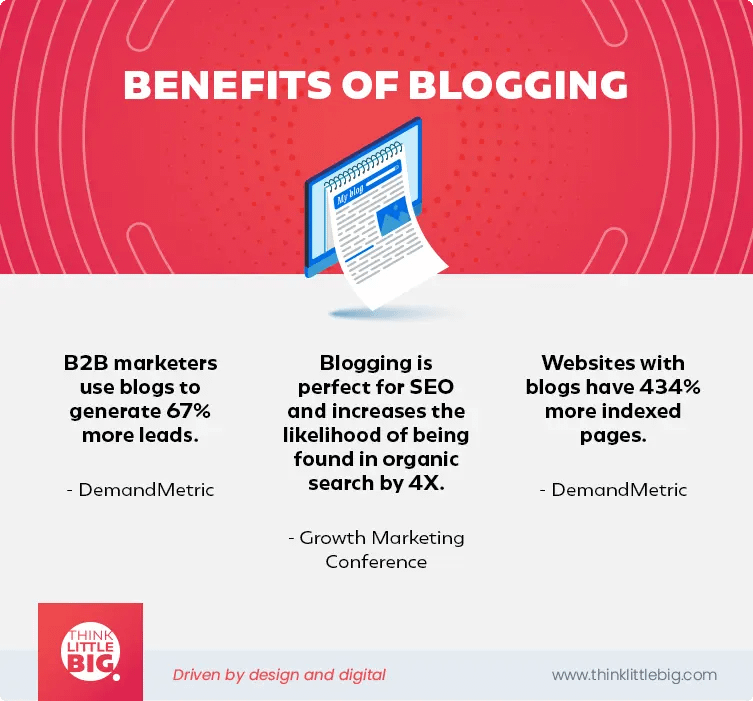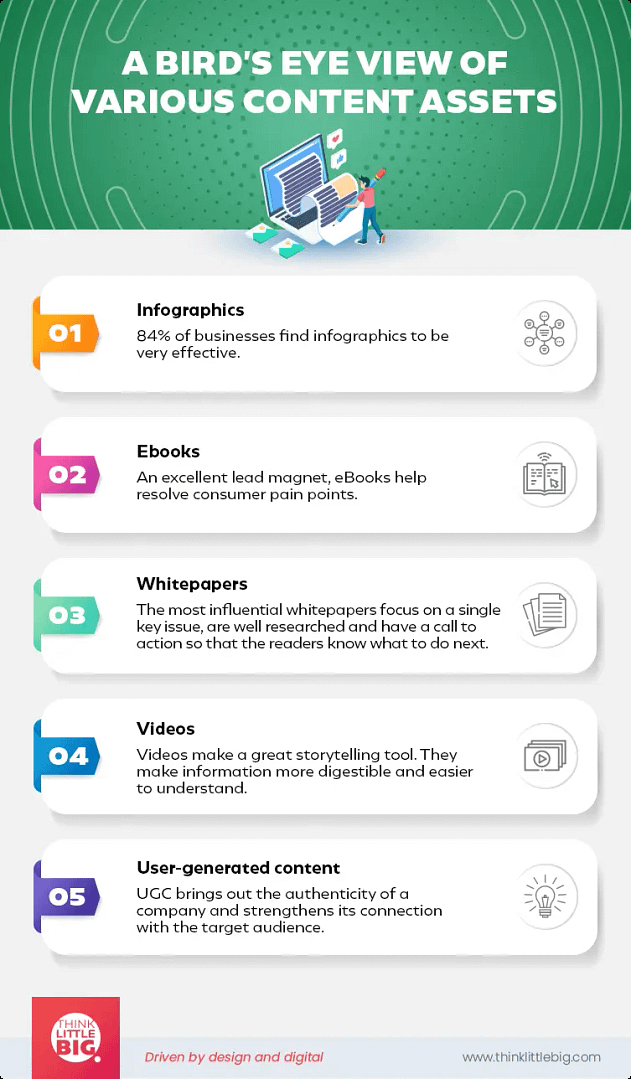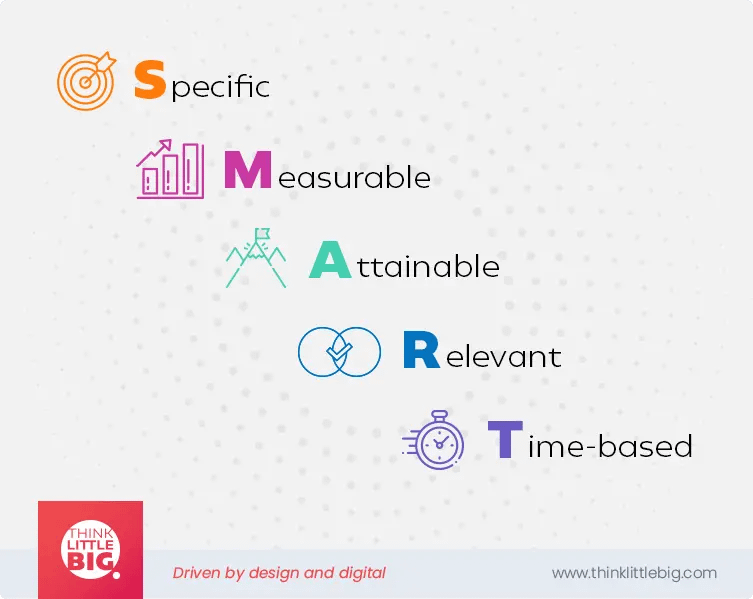Content marketing is a stimulator of growth for most businesses. According to multiple studies, it generates about 3X as many leads and ensures a year-on-year growth by 7.8X in unique website traffic. 75% of marketers say content marketing increases engagement.
Furthermore, CMI’s 2020 benchmark report reveals that nearly half of B2B marketers expect their content marketing budget to increase this year.
It is good that you want to focus on content, but content creation without any clear business goals is not exactly an accomplishment. If anything, the lack of an effective content marketing strategy gives your potential customers a reason to doubt your business vision.
Don’t be surprised when we tell you that even in 2020, 69% of companies don’t keep documented content strategies!
Unfortunately, no business can excel in marketing unless they know how to set goals and objectives for their content activities. In this article, we shed light on the how’s and why’s behind having an effective content marketing strategy for your business:
I. Types of content assets to create
What is the first thing that comes to mind when you say “content marketing”? We are 100% sure it is blogs! They are relatively easy to produce, especially if they aren’t too long or contain many images. You can also cover reviews, listicles, and how-tos as blog posts.
Power words are those that have been tested and found to incite recipients to take action. Use this cheat sheet which we have created, keeping in mind what works best in email marketing for accountants, and include the right words wherever apt in your email text.

So, yes, blogging is not going away anytime soon. But if you want to take a step further and add more to your content mix, here are different types of content you can experiment with:

II. The “WHY” behind producing content
You will never reach your content marketing goals if you don’t know what you are looking to achieve. Different types of content work better in pursuit of different business goals, which is why it is necessary to define them before content creation.
Find your purpose
One of the simplest ways of finding your purpose is to examine the weak spots of your business, which could include:
1. Brand awareness
Are you planning to launch a new product or service, penetrate a new market or compete with branded competitors? Your goal should define your content marketing plan.
2. Audience engagement
If the objective is to build credibility, trustworthiness and authenticity in your target customer’s life, create content assets to raise your company’s profile.
3. Customer retention and loyalty
Is your customer support team receiving high volumes of calls? Are you failing to secure repeat customers? To influence the buying process at any consumer touchpoint, you need to win their trust first. The right content assets can help you with that.
4. Lead generation
Revenues lie in leveraging email lists the right way. To build one, you need to give your buyer personas something of value so that they can provide their contact details to you. That valuable content to download could be a whitepaper, checklist or an eBook.
5. Boosting website traffic
Are you failing to drive website traffic? Are your visitors bouncing off of your webpages? Is your blog site traction tanking? Find your purpose and create an effective content marketing strategy to fulfil it.
Tip: Relevant content with a universal appeal hardly shows results. Therefore, to make your content work for you, choose a goal (for .e.g boosting website traffic) and work towards fulfilling it.
III. Next on the menu: setting SMART goals
The term first appeared in a paper by George T. Doran, former director of corporate planning for Washington Water Power Company. In the document, he introduced SMART goals as a tool to define criteria for improving the chances of accomplishing a goal. To ensure your business goals are clear and achievable, each one should be:
1. Specific
Start with the basics. As mentioned before, define your goal in-depth, and answer questions like who is involved, what you want to accomplish, how it will be done and so on. For example: if you are looking to improve your blog site traffic, chalk out the steps you will take to do so.
That could include:
- Reviewing SEO keywords to increase organic traffic by 10%
- Drafting a new set of blog topics to attract 2% more
- US professionals to the site
- Changing the blog publishing days and times to change visitor traffic to 5% more under-25s
- Identifying more syndication platforms to increase domain authority by 5
- Revamping the blog calendar to attract revisits by target market by 5%
- Be specific to the ‘t.’
2. Measurable
Whatever goals you assign yourself should be measurable. If you want to rank high on search engines, that’s great! But don’t leave it at that. Track the progress and measure the outcomes.
For instance, if your goal is to improve your blog site traffic, define numbers. Do you want to boost traffic by 10%, 20% or 50%? Have a method of measuring the content you publish against that metric.
3 . Achievable
Your goal should be reasonable enough to be accomplished. One hundred thousand unique website visitors in a month? That is overambitious! An effective content marketing strategy starts small and paces up.
4. Relevant
Keep your aspiration in check and identify what you can do with the resources available to you. If your goal is to build an email list just because everyone else is doing it, that won’t help your case.
Your goal must add value to your target customers. It should be consistent with your other business goals and fit in your immediate and long-term content marketing plans.
5. Time-bound
Your goal must have a deadline. For example: if you are planning to change the blog publishing days and times to change visitor traffic to 5% more under-25s, by when do you want to achieve that change? Add an end-date.
And so, your SMART goal to achieve your objective of increasing organic traffic becomes: Review and refine SEO keywords across the entire website to increase organic traffic volume by 10% over six months.
Tip: Please remember to review your goals and make adjustments, whenever necessary, periodically. Goal setting for your content marketing strategies is essential for success.

IV. Examples of effective goals
Did you know 57% of businesses follow their document marketing strategy “somewhat closely?” Don’t be like them. You should be crystal clear about what you are working on. Here are examples of effective content marketing strategies you might want to replicate for your business:
1. Creation of goals
If content creation is a part of your business goal, clarify! Is it to:
- Write 2500 words this week?
- Create one new blog concept this month?
- Publish content as a new medium (video, podcasts, SlideShare) this quarter?
- Fill your editorial calendar based on this information.
2. Performance goals
Any goal that allows space for self-evaluation can have effective results, and that could be:
- A qualitative goal such as publishing one blog each month on a subject in which you don’t have much experience to attract a new stratum within your target audience in the next year
- A quantitative goal such as increasing web traffic by 10%
- A conversion goal such as increasing web traffic by 15% to increase email sign-up rate by 5% this quarter
- Make content auditing a habit!
3. Optimisation goals
Such types of goals are effective only if they are concrete. For example:
- Optimise one old blog this week for SEO keywords to increase organic traffic by2%
- Increase time spent on site by 10% this month
- Repurpose one blog into at least three formats this quarter to attract over-50s in the target sector
Following through on your SMART goals will always be more challenging than setting them. However, if you remain dedicated and even seek assistance in content marketing, achieving every goal will be a lot easier.
V. How to ensure you achieve your goals
1. For each goal, create an action plan. The effectiveness of a goal is not defined by what you have to do; it is defined by how you have to approach it.
For example: if you plan to publish a blog on a new but relevant subject, you will need to increase your research time and possibly approach others with more experience in that area. Without taking this action, you won’t be able to write and publish a new blog in the specified timeframe.
2. Write down your goals. Use any project management tool, such as Trello or Basecamp, to keep yourself reminded of your plan of action. If you fancy a diary, that would also do.
3. Prioritise your goals. You need to know how much effort and time every activity is going to take. Perhaps start with a goal that will give you maximum results with the least amount of effort.
4. Have activation triggers for your goals. A simple action, such as publishing a new blog every Monday, can streamline the process of reaching our goals. Create a content calendar and stick to it.
5. Review your goals. Evaluate your content marketing strategy framework on a weekly, monthly and quarterly basis. Don’t try to control the output. Control your input. Results are going to be proportionate with your efforts.
Think through each step of your content marketing strategies. Decide who you want to reach with your content, how you will deliver that content to them and, finally, how you will achieve and measure the outcome.
In case you need a little help in developing an effective content marketing strategy for your business, you can always rely on us. To know more, get in touch with us at contact@thinklittlebig.com. Speak soon!


